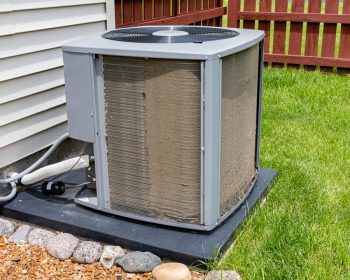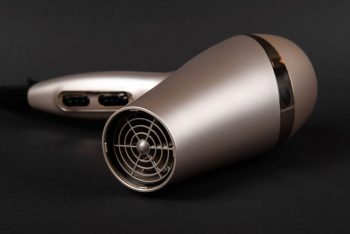
The washer and dryer are household appliances that play a crucial role in maintaining the cleanliness and comfort of our homes. One setting that often puzzles homeowners is the “Bedding” cycle on a washer. What does it mean, and when should you use it? In this comprehensive guide, we will delve into everything you need to know about the “Bedding” setting on your washing machine.
The “Bedding” setting on a washing machine is designed to wash large and bulky items such as comforters, blankets, sheets, and other bedding materials. It uses a gentle drum rotation, lower spin speed, extra soaking time, and multiple rinses to ensure these items are thoroughly cleaned without getting tangled or damaged.
Understanding the “Bedding” Setting
The “Bedding” setting on a washing machine is designed specifically for washing large and bulky items such as comforters, blankets, sheets, and other bedding materials. This cycle is set to prevent large items from getting tangled or damaged during the wash, and it ensures that each item gets thoroughly wet and cleaned.
The bedding cycle typically includes a gentle drum rotation, lower spin speed (around 800rpm), extra soaking time to relax the fibers, and multiple rinses. These settings help make the sheets and covers as soft as possible while minimizing creases and ensuring a thorough clean.
What Items are Suitable for the Bedding Setting?
The bedding setting on a washer is best for items such as bed sheets, pillowcases, and duvet covers. Different materials require specific care, so it’s essential to check the care label on your bedding items before washing them. Here are some general guidelines for washing various bedding materials:
- Cotton: Cotton bed sheets can usually be washed in a normal cycle with warm or hot water, depending on the care label instructions.
- Polyester blends: These should be washed using warm water, as they may not tolerate hot water as well as cotton.
- Linen: Linen is durable and breathable, and it can be washed in warm water on a permanent press setting using your usual detergent.
- Silk: Silk is a delicate fabric, and it’s best to wash it in cold or cool water on a gentle cycle.
The Bedding Cycle vs. Other Washer Settings
Each washer setting is tailored to specific fabric types and cleaning needs, ensuring optimal cleaning results and fabric care. The bedding function is specifically designed for washing large items and linens, providing a gentle yet effective cleaning process.
In contrast, the normal cycle is most commonly used for everyday clothing items, combining high spin speeds and warm water. The delicate or gentle cycle uses cool or cold water, a shorter duration, and a gentler, slower spin and agitation for delicate fabrics. The heavy-duty cycle is designed for extra dirty items, using more water and a longer wash time to remove tough stains.
The Benefits of Using the Bedding Setting
Using the bedding setting on your washer has several benefits. It fills the washer with enough water to wet down the load, ensuring that large items are thoroughly soaked and the detergent is evenly distributed. The bedding setting provides extra water and soaking time, which is necessary for penetrating the fabric of large items like comforters. It helps preserve the quality and appearance of your linens, as it is designed to handle the specific needs of bedding materials.
The Bedding Cycle: How It Works
To ensure optimal cleaning, the bedding cycle uses a combination of warm water and slower spin cycles. It starts by soaking the bedding in warm water to help relax the fibers and remove dirt and stains. The washer then agitates the water to clean the bedding. After the wash cycle, the washer drains the dirty water and spins the bedding to remove as much water as possible. Finally, the washer rinses the bedding to remove any remaining detergent and spins it again to extract as much water as possible before the drying process.
Conclusion
The bedding setting on a washing machine is a useful tool for maintaining the cleanliness and longevity of your bedding items. Understanding how to use it properly can help you get the most out of your washer and keep your bedding looking and feeling its best. Always remember to check the care labels on your bedding items for specific washing instructions, as some fabrics may have unique requirements. With the right care and maintenance, your bedding can provide comfort and beauty for many years to come.
Frequently Asked Questions
Can I wash pillows in the “Bedding” cycle?
Yes, you can wash pillows in the “Bedding” cycle. However, it’s important to check the care label on the pillows. Some might require a delicate cycle or even hand washing. Also, remember to balance the load by washing two pillows at a time.
How often should I wash my bedding using the “Bedding” cycle?
As a general rule, you should wash sheets and pillowcases once a week, and comforters, blankets, and mattress pads every two to four weeks. However, this can vary depending on personal habits, climate, and specific care instructions for your bedding items.
Can I use the “Bedding” cycle for smaller items like towels?
While you can use the “Bedding” cycle for towels, it may not be the most efficient choice. The “Bedding” cycle is designed for larger items and may use more water than necessary for smaller loads. A regular or heavy-duty cycle might be more appropriate for towels.
Can I use bleach in the “Bedding” cycle?
Yes, you can use bleach in the “Bedding” cycle if your bedding items are white or colorfast. However, always be sure to check the care labels, as some fabrics may not be suitable for bleach. Always follow the bleach manufacturer’s instructions for use.
What temperature should I use for the “Bedding” cycle?
The “Bedding” cycle typically uses warm water. However, the temperature can be adjusted based on the care instructions of your specific bedding items. For example, delicate fabrics like silk may require cold water, while cotton can often tolerate warm or hot water.












